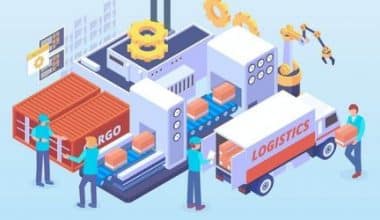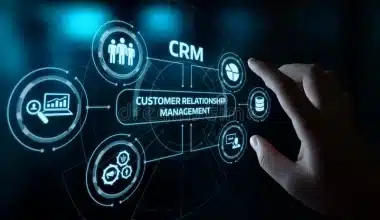Supply planning, also known as supply chain planning is a crucial business management tool that predicts demand for products and materials, influencing supply, demand, and inventory levels in retail chains. With supply chain planning systems, retailers forecast the demand for products and the materials required to meet those demands.
The process helps companies determine the necessary products to keep in stock to balance future demand plans. The supply planning function is influenced by factors such as order entry, review, release with suppliers, and inventory management within warehouses and distribution channels.
This article offers a thorough analysis of the supply planning process, alongside the most effective strategies, including top supply planning management software.
Let’s get started!
What is Supply Planning?
Supply planning is a crucial component of demand planning. It is the process of analyzing demand forecasts, comparing them to existing inventory, and coordinating supply chain activities to meet the predicted demand, determining production levels, required materials, and timings required to meet those demands.
Inventory management is crucial for sales and operations planning as it affects sales volume and product pricing. Adjustments are made based on demand changes, potentially requiring companies to adjust their inventory levels.
Internal teams like sales, marketing, and production work together to estimate product demand using historical data, which is then shared with production and other teams for inventory management.
The Supply Chain Planning software suites, which are integrated with transactional systems, offer organizations planning and what-if scenario analysis features.
Let’s consider the step in planning a supply.
Read Also: SUPPLY PLANNING VS DEMAND PLANNING: What is the Difference?
Key Elements of Supply Chain Planning Process
To successfully implement supply chain planning, it is important to ensure seamless coordination between various teams and processes. The key elements of supply chain planning include:
#1. Demand Planning
Demand planning forms the foundation of subsequent supply chain processes. The process involves analyzing historical data, projected sales, and market conditions to accurately predict demand, maintain optimal inventory, and avoid surplus costs.
But today, advanced technology is now used for demand planning. The advanced software, using artificial intelligence and machine learning, accurately predicts demand by analyzing real-time data, market conditions, events, and point-of-sale data.
The use of predictive analytics to forecast demand has increased. It enhances a better understanding of consumer behavior, buying patterns, and other factors influencing demand.
#2. Supply Planning
The next step is to develop a supply plan that aligns with the demand plan and meets the business’s overall requirements. The supply plan is a strategic approach to sourcing raw materials and components for production, aiming to optimally meet product demand.
The process involves identifying suppliers’ locations and establishing contracts for retail stores and consumer goods producers to purchase products and obtain raw materials.
This step allows you to identify potential changes in payment terms, such as immediate payment requirements or open account credit terms with your suppliers. The essence is to create a supply plan that aligns with your business strategy, manages cash flow, and aligns with your company’s budget.
#3. Production Planning
This process entails the allocation of resources such as employees, materials, and production capacity. A production plan aims to reduce waste and ensure optimal inventory availability by producing only what is necessary.
A supply chain plan improves cross-functional visibility by implementing efficient inventory management.
#4. Sales and Operations Planning (S&OP)
Monthly sales and operations planning aligns diverse business teams with objectives while assisting sales and marketing leaders in integrating their plans with operations.
The all-party meeting of various teams helps coordinate supply assets and capabilities to meet short and long-term demand requirements.
In some companies, sales and operations planning is carried out as part of a wide process called integrated business planning. It combines plans from various departments, like finance and HR departments into a single, company-wide plan.
Why is Supply Planning Important?
Effective supply planning offers several benefits, including:
#1. Cost Efficiency
Supply planning not only reduces operating expenses but also improves overall profitability. Supply chain management enhances business processes to reduce production, packaging, warehousing, and transportation costs. This, in turn, prevents wastage and facilitates timely delivery to achieve cost efficiency.
#2. Enhance Output
Supply chain management optimizes business productivity by efficiently monitoring production processes, ensuring resource utilization, and preventing wastage to maximize output.
#3. Prevent Production Delays:
Supply change management ensures timely acquisition of materials and efficient delivery and logistics services, preventing business process delays and facilitating uninterrupted product production.
#4. Better Collaboration:
Supply chain management enhances collaboration among business parties by promoting effective communication, preventing confusion, and facilitating smooth information flow among employees, customers, suppliers, and distribution.
#5. Easily Identify Problem Areas:
Supply chain management aids businesses in identifying and resolving issues affecting reputation and profitability, enabling managers to monitor departmental performance and pinpoint areas for improvement.
What are Some Key Challenges of Supply Planning?
Supply planning, like any other system, is characterized by various challenges, including
#1. Too Complicated
Supply chain management is a complex process involving multiple departments within an organization, potentially leading to confusion and disrupting business operations.
#2. Costly To Implement
Supply chain management is a costly process that requires significant investment in time, money, and resources, making it unaffordable for small businesses.
#3. It is Unreliable
Supply chain management’s reliability is compromised by departmental information exchange, which can lead to inaccurate sharing, thereby negatively impacting the entire supply chain’s performance.
#4. Requires Trained and Personalized Staff
Supply chain management requires skilled and qualified human resources for effective company executives. Acquiring such a professional and skilled workforce can be costly, which can also be a challenge to small companies in implementing supply chain management.
#5. Lack Departmental Coordination
Effective supply chain management requires strong departmental coordination, which can be challenging for large corporations to achieve.
Now, let’s appreciate the basic practices for executing successful supply planning.
Supply Planning Best Practices
Supply chain planners continuously strive to enhance their sales and operations planning performance through continuous improvement efforts. Below is a list of various best practices for implementing global supply chain planning:
#1. Collaborate with suppliers
It is important to build robust relationships with your suppliers and collaborate with them to guarantee a consistent and dependable supply of goods. To efficiently communicate with suppliers, it is recommended that you use a single system for requesting, tracking, and managing all customer requests.
#2. Use technology to enhance supply planning:
Enhance supply planning with technology by utilizing software applications like inventory management systems or sales forecasting software to monitor inventory levels, delivery schedules, and performance metrics.
#3. Implement demand forecasting:
Demand forecasting is a method used to predict the anticipated demand for a product by analyzing market trends, and enabling the planning of production volumes, product introduction schedules, and future inventory levels.
To anticipate demand and make informed decisions to prevent shortages or overstocking, use real-time data and analytics.
#4. Build a flexible supply chain
The supply chain should be flexible and adaptable to meet customer needs. It should also take into consideration various elements that enable production in different quantities and locations.
To prevent disruptions, consider utilizing multiple supply sources and flexible manufacturing methods, allowing for adjustments in production timing and schedules as needed.
As a bonus offer, this article provides a list of top Supply Chain Management Software to assist in selecting the most suitable software for your business implementation.
Top Supply Chain Management Software.
Supply Chain Management software solutions streamline supply chain operations, from order management to warehouse optimization, enabling teams to focus on client relationships and strategic initiatives. The following software is considered the top choice for businesses looking to streamline their supply chain operations:
#1. NetSuite:
NetSuite is a software suite that focuses on predictive analytics, which is the use of data analysis to predict future outcomes. The platform’s predictive tools can be used to predict market demand and manage inventory effectively. NetSuite is a renowned provider of enterprise resource planning (ERP) software suite, which includes its supply chain optimization tools. It is owned by Oracle, operates on the Oracle Supply Chain Management (SCM) Cloud platform and charges an annual licensing fee based on optional features and user count.
#2. Precoro:
Precoro’s supply chain management (SCM) tool primarily focuses on approving purchases. The system provides comprehensive supply chain visibility to all organizational departments, enabling specific departments or individuals to approve supply chain decisions. For instance, the production department may want to authorize a raw goods purchase for the assembly line, while the marketing department may authorize a card stock purchase for an ad campaign. This can be possible using Precoro’s finance capabilities and custom approvals.
#3. Magaya Supply Chain:
The Magaya Supply Chain is a comprehensive software solution utilized by retailers, warehousers, and logistics providers for order tracking, warehouse management, financial management, customer service, and other business processes.
In addition, the system also works with the Magaya Digital Freight Portal, a digital tool that manages bookings, tracking, and reporting.
#4. SAP SCM:
SAP supply chain management is a comprehensive enterprise-grade software that offers business intelligence tools for effective supply chain management. These include, AI-powered predictive analytics, integrated planning tools for demand-driven supply chains, and supplier management tools ensure optimal vendor cooperation.
In addition, SAP SCM offers a comprehensive feature suite, which can be implemented through the purchase of implementation services for team training on the software.
#5. Logiwa WMS:
The Logiwa WMS SaaS offers order management automation and real-time syncing features. Logiwa, a supply chain planning software, utilizes an open application programming interface (API), to ensure seamless communication with other software like NetSuite and ecommerce platforms like Shopify.
#6. Shippabo:
The Shippabo SCM offers ocean freight deliveries and SCM services to streamline the import process of pre-assembled items and large factory-sourced raw goods from overseas.
#7. FreightPOP:
FreightPOP is software that works together with major shipping companies like Hercules Freight and FedEx LTL, making it suitable for supply chain operations requiring freight shipping with large loads.
The system offers a comprehensive suite of features including transportation management, freight planning, freight auditing, and supply chain analytics.
Final Thoughts.
The supply planning process is a crucial aspect of efficient logistics. It anticipates future demand and efficiently acquires and distributes raw materials or finished goods, to ensure timely supply.
The lack of a plan has led to a lack of direction in goods flow, causing supply to be impacted, and supply chain leaders are now seeking a solution for business continuity.
In conclusion, efficient supply chain planning can minimize the impact of unexpected challenges such as raw material shortages, rising costs, transportation strikes, and natural disasters on supply chain and procurement leaders.
What is the duty of a Supply Planning Manager?
Supply chain managers oversee logistics, inventory updates, operational performance analysis, issue resolution, and collaboration with vendors and suppliers to ensure quality and safety standards in all operations.
What Is the Role of Supply Planning?
The job of supply planning involves predicting and managing stock levels to ensure business operations, conducting regular inspections, anticipating market changes, and ensuring financial feasibility.
What Are the Activities of Supply Planning?
Supply Chain Planning involves modeling, evaluating, and decision-making in areas like inventory management, collaborative forecasting, supply chain scheduling, distribution strategies, capacity assignment, and facility location/allocation.
What Are the Elements of Supply Planning?
Implementing the five elements of supply chain management (planning & strategy, sourcing & procurement, production scheduling & control logistics & delivery performance measurement), can significantly reduce costs, increase efficiency, and enhance customer service.
What Is the Difference Between Procurement and Supply Planning?
Procurement involves acquiring necessary goods and materials, while supply chain management involves efficiently transforming these goods into products and distributing them to customers.
What Is the Difference Between Supply Planning and Demand Planning?
Demand management forecasts customer demand using historical sales data, market influences, and other factors. Supply planning, on the other hand, outlines how a business will meet demand while maintaining financial and service goals, considering inventory production and logistics.
Can Supply Chain Management Software Integrate with Enterprise Resource Planning (ERP) Systems?
Yes. A lot of leading supply chain management software tools can seamlessly integrate with ERP systems using an open application programming interface (API), which facilitates data communication and sharing between various software tools.
What are the Benefits of Supply Chain Management Software?
Supply chain management software enhances logistics operations throughout a product’s life cycle, from procurement to warehouse stock management and customer order fulfillment.
SUPPLY CHAIN MANAGER SALARY: How Much Do Supply Chain Managers Make 2023
How Data Analytics Is Transforming Supply Chain Management
SUPPLY CHAIN VISIBILITY: Types and How To Improve Visibility






